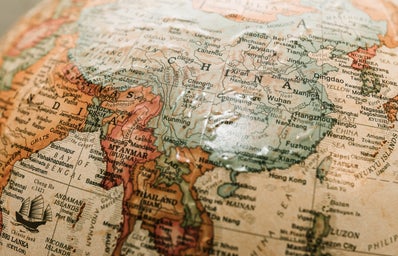The Wind Rises (Kaze Tachinu), written and directed by Hayao Miyazaki is a dramatised biopic centred on the life of Jiro Horikoshi, the designer of the Mitsubishi A5M fighter aircraft and its successor, the Mitsubishi A6M Zero, which were used by Japan during World War II. Horikoshi, both an artist and an engineer, grapples with the conflict between his passion for his work and the greater question of moral implications of his creations being utilised as weapons of war, causing the deaths of thousands.
Christopher Nolan‘s Oppenheimer, similarly, is an epic biography that delves into the life of J. Robert Oppenheimer, the American theoretical physicist credited with being the “father of the atomic bomb” for his pivotal role in the Manhattan Project. Based on the book American Prometheus by Kai Bird and Martin J. Sherwin, Oppenheimer, an inspired physicist, embarks on the development of the first nuclear weapons used during World War II, only to be plagued by the tragic aftermath of the monster he helped unleash.
While Oppenheimer’s thrilling breakneck pace, leading to the creation of the atomic bomb, leaves the audience in complete awe of the visuals and the incredible tenacity with which Nolan approaches the horrors of war, Miyazaki’s approach with Jiro is more deliberate and intentional. Miyazaki lets his audience immerse themselves in Jiro’s story, stewing in the aftermath of the violence. Both directors appear to have carefully calculated the specific emotional response they aim to evoke from their audience.
Miyazaki’s depiction of Jiro Horikoshi begins with a dream— a dream of flight, purpose and beauty. His passion and genius become evident as the story progresses, and through a sequence of Jiro’s dreams, we are drawn into his profound love for his work. Jiro is portrayed by Miyazaki as someone whose thoughts are often in the skies, consumed by his aircraft designs. He is very markedly disconnected from the harsh realities of life, showing little concern for anything other than his projects. Miyazaki draws inspiration for the movie’s title, The Wind Rises, from the poem ‘The Graveyard by The Sea‘ by Paul Valery.
“As a pear dissolves in the act of being eaten,
transformed, through sudden absence, to delight
relinquishing its shape within our mouths,
even so, I breathe in vapors I’ll become,
as the sea rejoices and its shores enlarge,
fed by lost souls devoured; more are rumored.“
The narrator at the beginning of the poem is faced with a sense of despondency as he ponders on his ever impending and inevitable demise. His despair stems from the world’s apparent disregard to his existence, the relentless march of life continuing unbated. However, there is a shift in the rhythm of the waves, and the winds begin to stir, signalling to the narrator that he must persist in living.
“The wind is rising! … We must yet strive to live!“
In his relentless pursuit for greatness fuelled by his love for planes, Jiro tragically loses the most important person in his life, his wife Nahoko Satomi. Despite Nahoko’s deteriorating health, her support is unwavering for Jiro’s ambitions, his singular focus on his work causes him to lose touch with the love that grounds him. Similarly Oppenheimer, rejects familial responsibilities in his quest of immortality and invention. Heroes don’t seek to dwell too loud and too long on the human condition of love and commitment. Katherine Oppenheimer, Robert Oppenheimer’s wife, remains devoted in a marriage that fails to provide her any care or support.Despite her husband’s infidelity and the ordeal of his court trial, she remains loyal, seemingly with limited alternatives.
Love seemingly absolves all human faults in Jiro and Oppenheimer because their legacies are larger than life itself. They are desired by purview of their geniuses and forgiven all offence as a result of the same. But unlike Katherine, love is not enough for Nahoko to stay. Love for her is not an all forgiving choice but a powerful one.
It is evident that both Nolan and Miyazaki find reflections of themselves in their protagonists. They write the misunderstood and terrifying genius in them in the characters of both Oppenheimer and Jiro respectively. Both directors depict their characters deliberately nurturing their genius, with ambitions set on achieving greatness—a pursuit essential to the legacies of Miyazaki and Nolan. Are Nolan and Miyazaki egotistical in this projection of their own talents? One might debate that it is only to be expected as the allegory writes itself out. Miyazaki, with his Studio Ghibli productions, is largley known to be the godfather of animation but Miyazaki, quite publicly, has expressed his distate in the unrealistic potrayals of humans in Japanese animation, going so far as to say, “It’s produced by humans who can’t stand to look at other humans…”
Miyazaki just wanted to create something he considered beautiful, an exquisite art form beyond all else, one he holds insurmountable respect for and one he believes has been diminished by the current practice of animation. Miyazaki regrets the destruction that popularity and capitalistic hunger and exploitation has brought to his beautiful art form, he believes his legacy ruined because he helped take those first steps to doom. In his view, all beauty inevitably fades, and genius brings its own burdens.
More so than Miyazaki, Nolan dives into the question of when does genius fostered and nurtured in one’s body turn dangerous. How far can one run, fly, build until one has to be cut off? How complicit can one’s genius be in one’s actions and how can you hold your genius accountable when facing with the brutality of war? How can one find forgiveness in oneself when admonishing your genius was not an option in the first place? The ethics of morality are far overshadowed in the character of Oppenheimer as he grapples with his legacy of death. Oppenheimer created of something revolutionary, but he shattered the lives of thousands in the process and put hate and fear into the hearts of millions. It is pretty obvious that Oppenheimer anticipated that his invention would create a ripple over time, a chain reaction of events but his ambition would not allow him to stop. All noise ceases to exist around Oppenheimer momentarily on the success of the trinity test, almost as an acknowledgement of the fact that soon he would be deafend with the cries of millions in his wake, the weight of hatred from across the world. Blinded by its brilliant light, Icarus flew too close to the sun.
Miyazaki does not go very far to express Japan’s role in World War II. Many critics have characterised the film to be morally repugnant. Japanese Nationalists have called Miyazaki disloyal as he completely denounces Japan’s reasoning for going to war. His argument for pacifism has been characterised by many to be completely out of touch with Japan’s reality. But Miyazaki did not make this movie to condemn Japan’s war crimes, he made this movie to tell the story of Jiro. He made this movie as an ode to Jiro’s lost dream, as an ode to Miyazaki’s own lost dream.
Nolan too was on the receiving end of similar criticism for not having talked about the struggle of the victim’s when the bomb is dropped on Hiroshima and Nagasaki and to showcase the aftermath of the truly cruel invention. But it is safe to say that Nolan’s intention was not to look at the tragedies of World War II but to bring to life the plight of the creator of a truly tragic invention. He was telling the story that only he could have told, his own. The moral standing of his film was never his main concern. The horrors of life, that of war knows no bounds but both Miyazaki and Nolan are here to only provide an ode to unimaginable genius and the and unencumbered ambition. Their serenades are not for the victims of violence but for that of the one tragic hero, the one that held the weapon of mass destruction and felt its power in his body.


